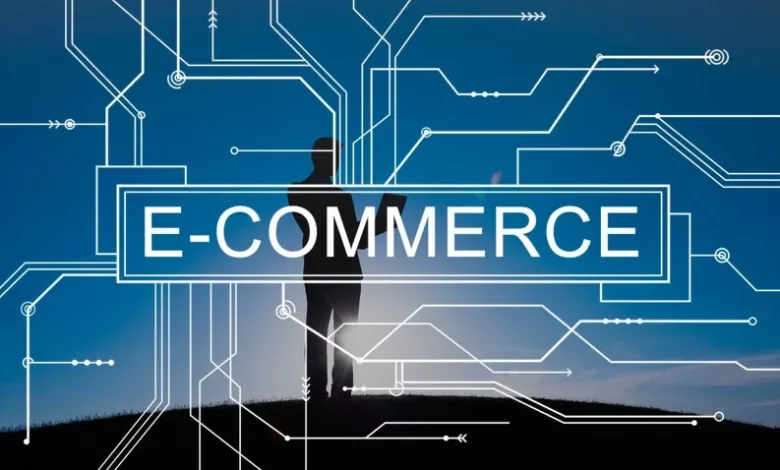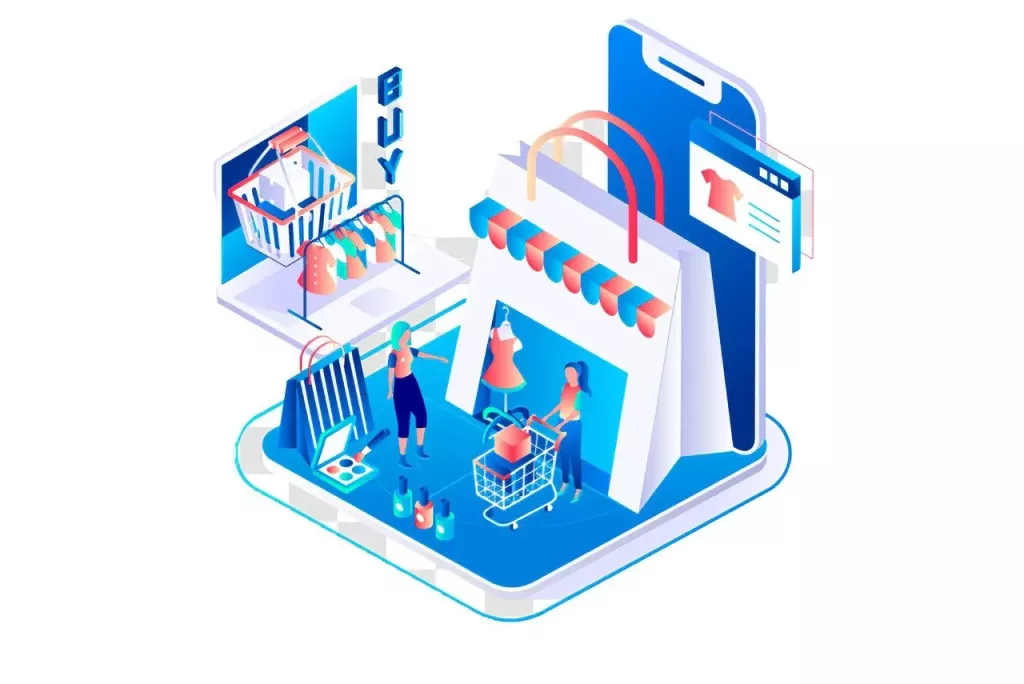What are End-to-End E-Commerce Solutions?

The changes in consumer expectations and preferences are occurring rapidly. Speed and convenience have become the cornerstones for customers.
They now demand fast and flexible purchasing experiences. Consequently, businesses are focusing on entering the digital realm to stay competitive and meet these evolving expectations.
To align with the increasing levels of e-commerce sales, establishing an e-commerce website has become crucial.
E-commerce has already become a fundamental element for sustainable strategic growth in businesses. Dedicated companies specializing in e-commerce solutions can provide the necessary expertise to support companies in their new endeavors.

End-to-end e-commerce software refers to a comprehensive solution that enables businesses to manage and operate their entire online retail operations seamlessly.
It encompasses a wide range of functionalities and features that cover every aspect of the e-commerce process, from product listing and inventory management to order processing, payment integration, and customer support.
An all-in-one e-commerce software solution typically encompasses the following essential components:
- Online Storefront: The software provides businesses with a platform to create and customize their online store, showcasing their products or services. It includes features like product catalog management, shopping cart functionality, and secure checkout processes.
- Inventory Management: Businesses can efficiently track and manage their inventory in real-time using the software. It enables monitoring stock levels, tracking product availability, and automating reorder processes to ensure streamlined inventory management.
- Order Processing: The software streamlines the order fulfillment process by automating tasks such as order confirmation, invoicing, and shipping label generation. It facilitates efficient order processing and improves overall order accuracy.
- Payment Integration: End-to-end e-commerce software seamlessly integrates with various payment gateways, allowing businesses to securely and conveniently accept payments. It supports multiple payment methods, including credit cards, digital wallets, and online payment platforms.
- Customer Relationship Management (CRM): CRM functionality helps businesses effectively manage customer data, track customer interactions, and provide personalized customer experiences. It enables businesses to analyze customer behavior, segment their customer base, and implement targeted marketing campaigns.
- Analytics and Reporting: The software provides robust analytics and reporting tools to track and analyze key e-commerce metrics such as sales performance, conversion rates, customer behavior, and inventory levels. These insights empower businesses to make data-driven decisions and optimize their e-commerce operations.
- Integration with Third-Party Services: End-to-end custom e-commerce solutions often integrate with various third-party services, such as shipping carriers, marketing tools, accounting software, and customer support systems. This integration enhances efficiency and enables businesses to leverage additional functionalities.
Questions to Ask When Considering End-to-End E-commerce Solutions
When considering end-to-end e-commerce solutions, it’s essential to ask the right questions to ensure the best fit for your brand.
Here are some important questions to consider:
Does the software align with your budget?
Conduct thorough research and compare pricing plans to identify a solution that is not only cost-effective but also aligns with your specific requirements.
By carefully evaluating the options, you can find a solution that strikes the right balance between affordability and functionality for your online store.
Can the software integrate with your existing tools?
Efficient operations heavily rely on seamless integrations with your current tech stack. It is crucial to seek a solution that can seamlessly integrate with your analytics tools, shipping services, and other systems.
By doing so, you can achieve a comprehensive view of your e-commerce processes, ensuring smooth data flow and enabling effective decision-making.
Prioritizing integrations will contribute to the overall efficiency and effectiveness of your e-commerce operations.
Does the software align with your business goals?
Whether it’s reducing overhead costs, improving workflows, or enhancing customer experiences, understanding your objectives is key.
Once you have a clear understanding of your goals, choose a software solution that aligns with these objectives and offers the necessary features to meet your specific needs.
Can the software scale with your business growth?
Selecting a scalable solution is paramount to accommodate future growth. Cloud-based software is highly recommended due to its scalability, accessibility from anywhere, and real-time data updates.
These features enable businesses to unlock their growth potential and ensure continuous e-commerce success.
By asking pertinent questions and conducting a thorough evaluation of your options, you can choose an end-to-end e-commerce solution that fits your budget, seamlessly integrates with your existing tools, aligns with your business goals, and possesses the ability to scale as your business expands.
The Cost of Developing an E-commerce Website
The investment required for the development of an e-commerce website can significantly vary based on several factors, including website complexity, desired features and functionality, design and branding elements, and the level of customization involved.
Typically, the cost of developing an e-commerce website can span from a few thousand dollars to tens of thousands or more.
However, it’s important to keep in mind that the expenses associated with e-commerce website development extend beyond the initial phase.
Ongoing costs may encompass maintenance, regular updates, hosting fees, and ensuring robust security measures are in place.
These ongoing expenses contribute to the overall investment required to establish and sustain a successful e-commerce website.
To spend your money in the right way, here are some tips:
- Determine your requirements: Start by determining your requirements for the website, including the functionality you need, the design you want, and the level of customization required.
- Prioritize your requirements: Prioritize the most critical features and functionality required for your e-commerce website so that you can allocate your budget accordingly.
- Research development companies: Research and select a reputable development company that has experience in developing e-commerce websites and has a good track record of delivering high-quality work.
- Ask for references: Ask for references from the development company and reach out to previous clients to get an idea of their experience working with the company.
- Get a detailed proposal: Ask the development company to provide a detailed proposal outlining all the costs involved in developing the e-commerce website.
- Consider ongoing costs: Don’t forget to consider ongoing costs such as maintenance, updates, hosting, and security when allocating your budget.
- Don’t compromise on quality: While cost is an important factor, don’t compromise on quality to save money. A poorly developed website may end up costing you more in the long run.
By following these tips, you can spend your money in the right way and ensure that your e-commerce website meets your requirements and delivers the desired results.





